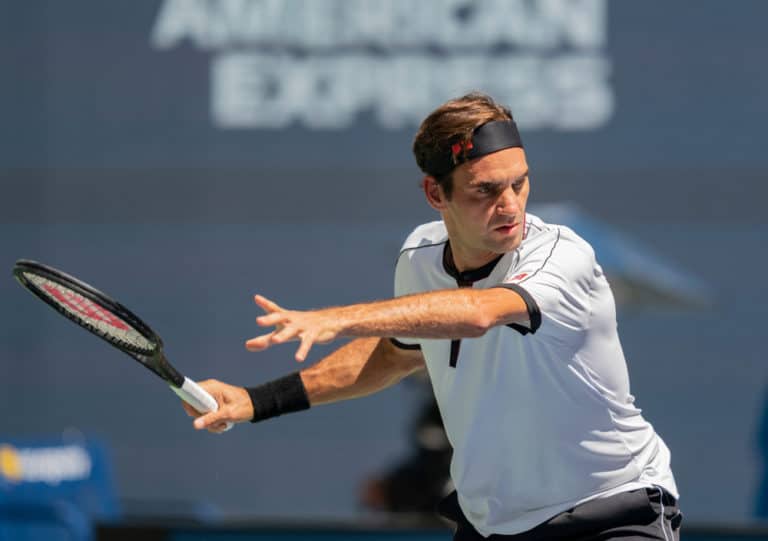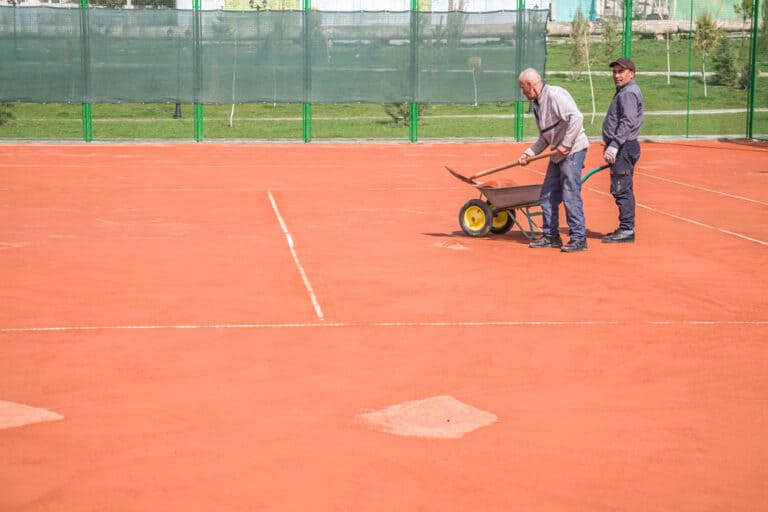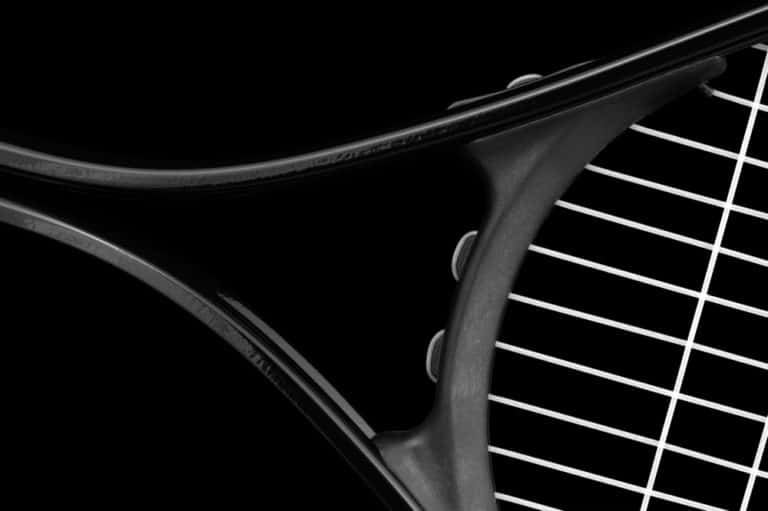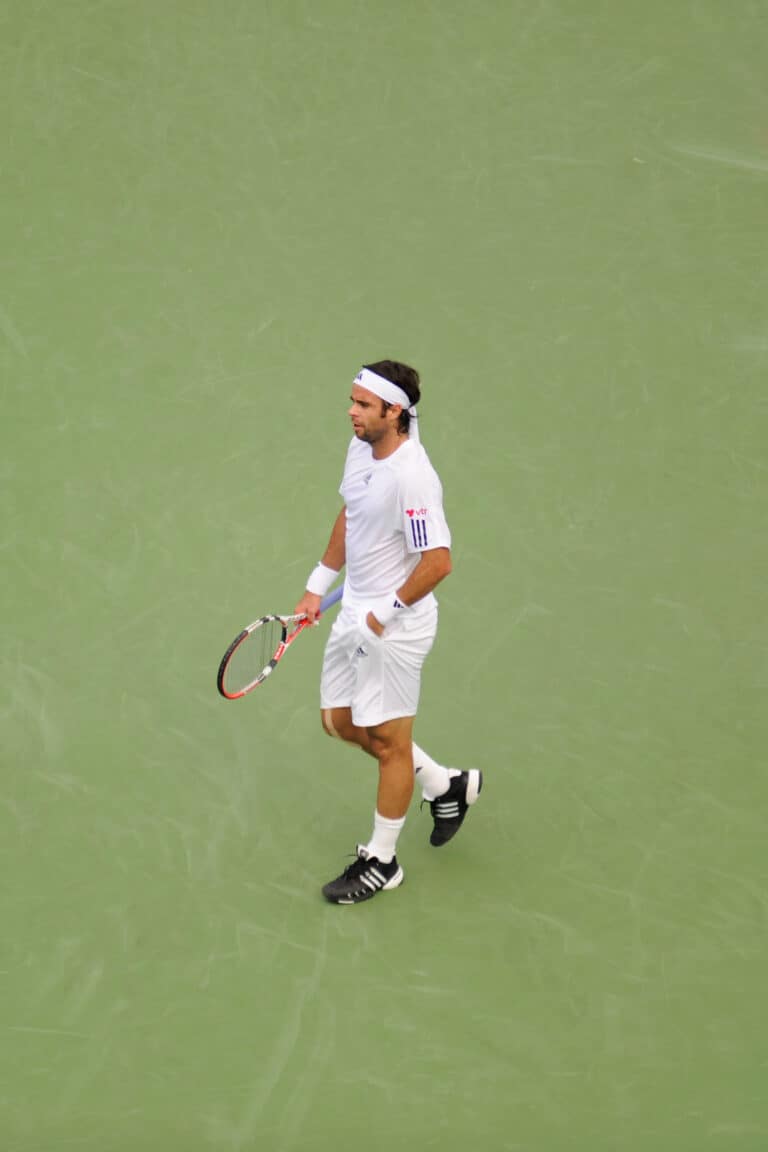Is There A Time Limit In Tennis?
Tennis matches can sometimes go on for hours and hours, especially men’s professional tennis matches in Grand Slams, where the first player to win three sets wins the match. Throughout tennis’s rich long history, fans of the game have witnessed absurdly long matches sparking the question; is there a time limit in tennis?
There is no time limit in professional tennis matches. A tennis match can technically go on forever. The game will never end if players trade point after point during a single game. Professional players must respect the time allocated between serves, medical timeouts, and bathroom breaks.
Over the years, tennis fans have been treated to tennis match marathons where neither player is willing to give up, turning them from professional tennis players to gladiators. But at some point, the match needs to end for everyone’s sake.
Do Tennis Matches Have Time Limits?
Unlike many other popular sports, tennis matches are not restricted to time limits, which some see as a blessing while others see as a curse. Even during the first (or any) game of the match, where a player needs to win two sucessive points to close out the game, it is technically possible for the game to last forever should neither player win two points in a row.
Though all service games eventually come to an end, other factors in tennis scoring can drag out a match. For the longest time in Grand Slam events, there were no tiebreaks in the fifth and final set of the match to decide its outcome. Players would keep trading service games until one of them won two games in a row.
Due to some Grand Slam matches lasting ridiculously long, some Grand Slam tournaments, like Wimbledon, have introduced tie breaks for the final set. This eliminates the possibility of the last set, the crucial time of the match where neither player is willing to give up, to go on for hours and hours.
A tennis match does not have a time limit; however, players must respect certain time restrictions during the match related to serving, changeovers, medical timeouts, and bathroom breaks. This helps the match keep a stable rhythm.
Time Limits For Serving During Tennis Matches
Tennis matches already have the potential to last several hours, if not more. To avoid dragging out a match, players must not take too long to recover between points. Thus, the maximum time allowed between points is currently twenty-five seconds.
Until recently, professional players on tour had no way of knowing how much time they had left before needing to start their serving motion. The chair umpire was the only person to view the countdown on their screen. However, there are now small screens on either side of the court, visible to players and spectators, indicating how much time is left for the player.
Tennis Players Cannot Take Too Long Between Changeovers
Professional players sit down on their chairs throughout a tennis match and rest every two games before switching sides. This resting period, known as a “changeover,” lasts ninety seconds. This time is extended to three minutes after the conclusion of a set.
Generally, umpires will make an effort not to be too harsh on players if they exceed the time limits slightly. However, if it is obvious that a player is using this extra time for their advantage, umpires will be quick to penalize them.

Medical Time Out Limit In A Tennis Match
It is not uncommon for players to get injured in the middle of a match, especially after playing for several hours. Players can ask for a medical timeout if they feel sick or experience some form of physical discomfort. A doctor and/or physiotherapist can come to treat the player for a limited amount of time.
If a player suffers from an injury in the middle of a game and cannot play the remaining points, they will be forced to forfeit the match. Players can only call for medical timeouts between games and sets.
Toilet Break Time Limit During Tennis Matches
After several hours of play, tennis players eventually need to use the bathroom, which they are allowed to do, but can only do so at specific times and for a limited time.
Players on the tennis tour may only take bathroom or toilet breaks in between sets. Not permitting players to go the bathroom in between games ensures that the game’s rhythm is not broken. Tennis players only have one toilet break available to them for the duration of the match. The toilet break can last up to three minutes, and the count starts as the player gets to the bathroom.
The rules concerning toilet breaks used to be more lenient but were made more strict after some players used toilet breaks tactically.
After hours of play, some players feel the need to swap their current sweaty outfit for a clean one. They are allowed to change their attire, but only during a toilet break. They also have a maximum of two minutes to change their clothes.
Time And Code Violations In Tennis Matches
When players take too long in between serves, medical timeouts, toilet breaks, etc., they are handed a time violation which counts as a code violation. After receiving the first code violation, players get a warning from the umpire. However, the penalties get harsher with more code violations.
After a warning, another code violation results in the player automatically losing a point. If another violation is made, the player can lose an entire game.
Though it does not occur frequently, some players commit enough code violations, usually a mix of time violations and unsportsmanlike conduct, to get themselves disqualified from the match.
The Longest Match In Tennis History
Due to tennis matches not having time limits, some matches have lasted far longer than some people realize. The records for the longest tennis matches are all held in Grand Slam events, but one of them stands out above the rest.
The longest-ever tennis match was played at Wimbledon (2010) over three days. The match was disputed between John Isner and Nicolas Mahut, with Isner claiming victory after eleven hours and five minutes of play. The score was the following: 6-4, 3-6, 6-7, 7-6, 70-68, with a total of one hundred and eighty-three games played.
To highlight the ridiculous length of this Wimbledon match, here are the longest matches ever played at the other three Grand Slam events on the tennis tour calendar:
- Fabrice Santoro vs. Arnaud Clément at the 2004 French Open (six hours and thirty-three minutes)
- Novak Djokovic vs. Rafael Nadal at the Australian Open 2012 final (five hours and fifty-three minutes)
- Stefan Edberg vs. Michael Chang at the U.S. Open 1992 semifinal (five hours and twenty-six minutes
Conclusion
Tennis matches do not have a time limit, so technically, matches can last forever. However, professional players must abide by time restrictions regarding the time allocated between points, games, and sets. Players must also respect their time for medical timeouts and bathroom breaks.







